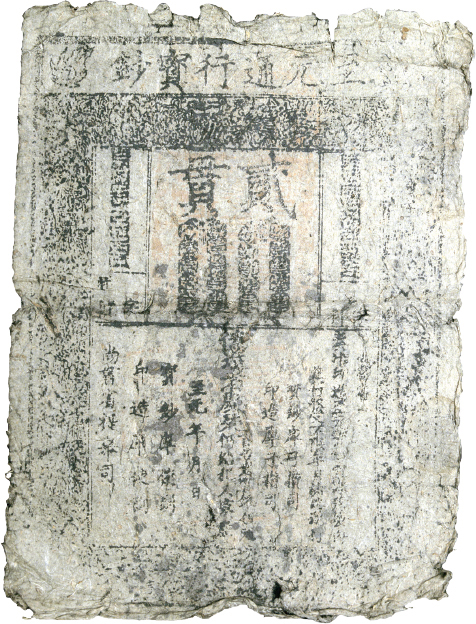What made possible the expansion of the Chinese economy, and what were the outcomes of this economic growth?

CCHINESE HISTORIANS TRADITIONALLY VIEWED dynasties as following a standard cyclical pattern. Founders were vigorous men able to recruit capable followers to serve as officials and generals. Over time, however, emperors born in the palace would get used to luxury and lack the founders’ strength and wisdom. Families with wealth or political power would find ways to avoid taxes, forcing the government to impose heavier taxes on the poor. As a result, impoverished peasants would flee, the morale of those in the government and armies would decline, and the dynasty would find itself able neither to maintain internal peace nor to defend its borders.
Viewed in terms of this theory of the dynastic cycle, by 800 the Tang Dynasty (see “The Tang Dynasty” in Chapter 7) was in decline. It had ruled China for nearly two centuries, and its high point was in the past. A massive rebellion had wracked it in the mid-
Historically, Chinese political theorists always assumed that a strong, centralized government was better than a weak one or than political division, but, if anything, the Tang toward the end of its dynastic cycle seems to have been both intellectually and economically more vibrant than the early Tang had been. Less control from the central government seems to have stimulated trade and economic growth.
A government census conducted in 742 shows that China’s population was approximately 50 million. Over the next three centuries, with the expansion of wet-
Agricultural prosperity and denser settlement patterns aided commercialization of the economy. Farmers in Song China no longer merely aimed at self-
As marketing increased, demand for money grew enormously, leading eventually to the creation of the world’s first paper money. To avoid the weight and bulk of coins for large transactions, local merchants in late Tang times started trading receipts from deposit shops where they had left money or goods. The early Song authorities awarded a small set of these shops a monopoly on the issuing of these certificates of deposit, and in the 1120s the government took over the system, producing the world’s first government-
With the intensification of trade, merchants became progressively more specialized and organized. They set up partnerships and joint stock companies. In the large cities merchants were organized into guilds according to the type of product sold, and they arranged sales from wholesalers to shop owners and periodically set prices.
Foreign trade also flourished in the Song period. Chinese ships began to displace Indian and Arab merchants in the South Seas, and ship design was improved in several ways. Watertight bulkheads improved buoyancy and protected cargo. Stern-
Also important to oceangoing travel was the perfection of the compass. The ability of a magnetic needle to point north had been known for some time, but in Song times the needle was reduced in size and attached to a fixed stem (rather than floated in water). In some instances it was put in a small protective case with a glass top, making it suitable for sea travel. The first reports of a compass used in this way date to 1119.
The Song also witnessed many advances in industrial techniques. Heavy industry, especially iron, grew astoundingly. With advances in metallurgy, iron production reached around 125,000 tons per year in 1078, a sixfold increase over the output in 800. Much of the iron was put to military purposes. Mass-
Economic expansion fueled the growth of cities. Dozens of cities had 50,000 or more residents, and quite a few had more than 100,000, very large populations compared to other places in the world at the time. China’s two successive capitals, Kaifeng (kigh-
The medieval economic revolution shifted the economic center of China south to the Yangzi River drainage area. This area had many advantages over the north China plain. Rice, which grew in the south, provides more calories per unit of land and therefore allows denser settlement. The milder temperatures often allowed two crops to be grown on the same plot of land, first a summer crop of rice and then a winter crop of wheat or vegetables. The abundance of rivers and streams facilitated shipping, which reduced the cost of transportation and thus made regional specialization economically more feasible.

Ordinary people benefited from the Song economic revolution in many ways. There were more opportunities for the sons of farmers to leave agriculture and find work in cities. Those who stayed in agriculture had a better chance of improving their situations by taking up sideline production of wine, charcoal, paper, or textiles. Energetic farmers who grew cash crops such as sugar, tea, mulberry leaves (for silk), and cotton (recently introduced from India) could grow rich. Greater interregional trade led to the availability of more goods at rural markets.
>QUICK REVIEW
How did the Chinese economic revolution change life in the countryside?